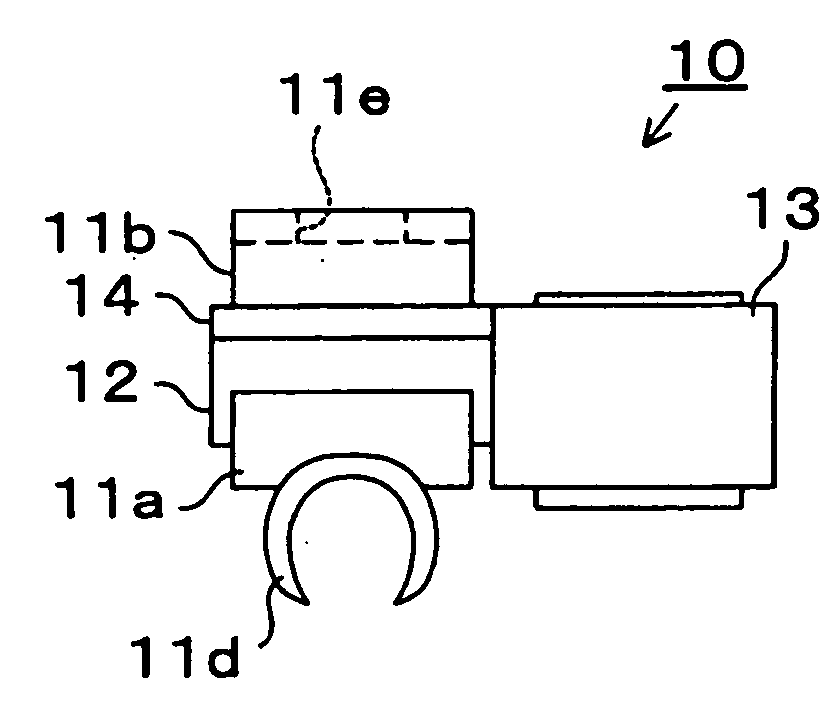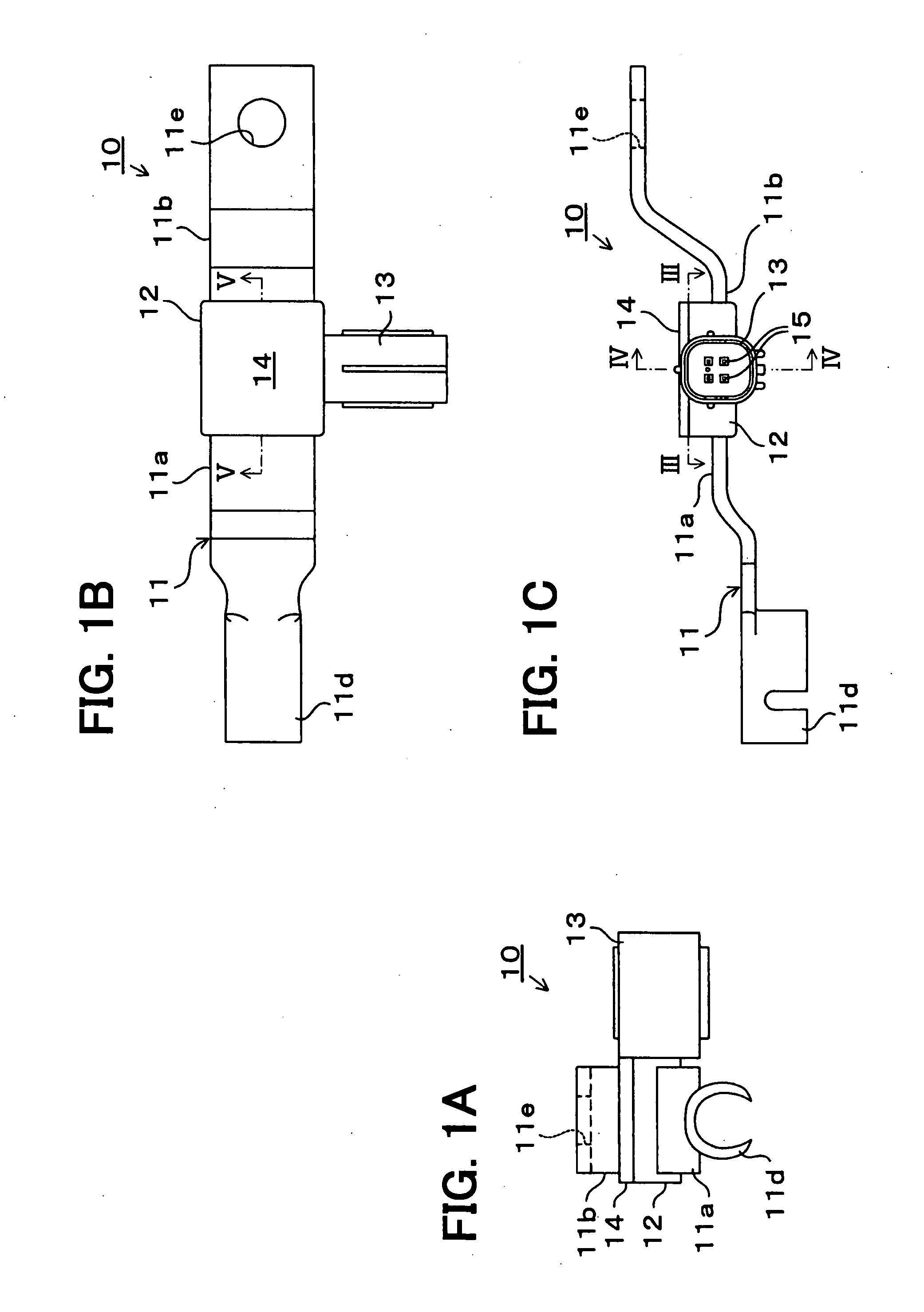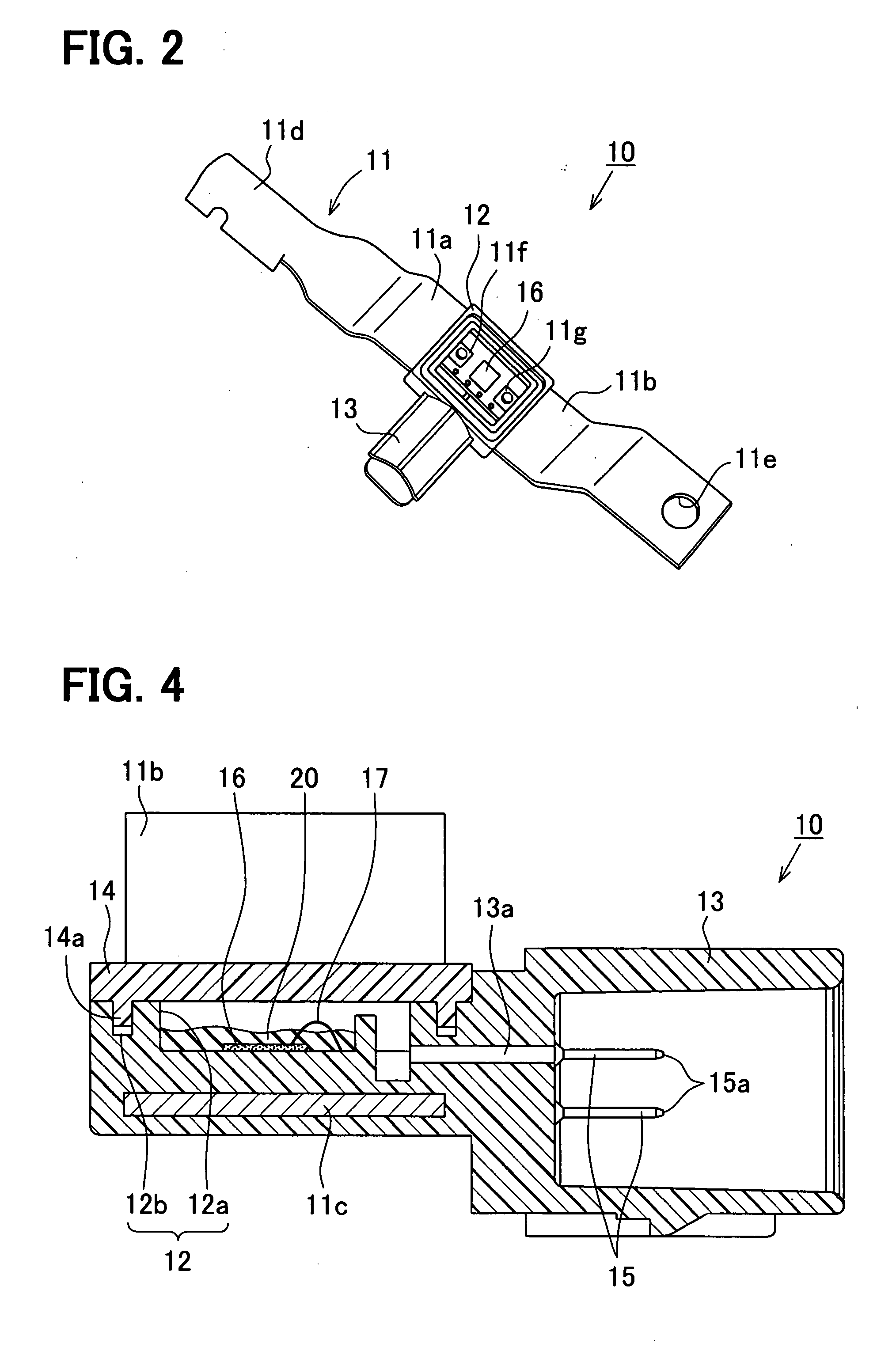Current sensor
a current sensor and current technology, applied in secondary cell servicing/maintenance, instruments, electrochemical generators, etc., can solve the problems of many manufacturing steps and cost, inability to detect a large current, and inability to use shunt resistors and resistor components, etc., to achieve accurate detection of electric current, small size, and reliable operation
- Summary
- Abstract
- Description
- Claims
- Application Information
AI Technical Summary
Benefits of technology
Problems solved by technology
Method used
Image
Examples
first embodiment
[0027]Referring to FIGS. 1A-7, a current sensor 10 according to a first embodiment of the present invention includes a busbar 11, a case body 12, a connector body 13, a case lid 14, a connector terminal 15, an integrated circuit (IC) chip 16, first and second bonding wires 17, 18, and first and second sealing members 19, 20. The current sensor 10 is used to detect, for example, charging and discharging currents of a vehicle battery.
[0028]As shown, for example, in FIG. 6C, the busbar 11 has long length and includes first and second terminals 11a, 11b, and a shunt resistor 11c. The busbar 11 forms a ground terminal of a wiring harness. Each of the first and second terminals 11a, 11b is formed by bending a rectangular metal plate made of a low resistance material such as copper, or copper alloy. The shunt resistor 11c is welded between the first and second terminals 10a, 10b. The first and second terminals 10a, 10b are bent in an opposite direction relative to the shunt resistor 11c.
[...
second embodiment
[0062]A current sensor 40 according to a second embodiment of the present invention is shown in FIGS. 9A-9C. A difference between the current sensors 10, 40 is in that the crimp terminal 11d is replaced with a bolt 41. The bolt 41 is welded to the second end of the first terminal 11a of the busbar 11 by electronic beam welding, laser welding, resistance welding, or the like. Alternatively, the bolt 41 may be unitary with the first terminal 11a of the busbar 11.
[0063]In order to connect the busbar 11 to the negative cable 32, the bolt 41 is inserted through a mounting hole of a ring terminal (not shown) attached to the negative cable 32. A nut (not shown) is then tightened onto the bolt 41 so that the busbar 11 can be electrically connected to the negative cable 32.
[0064]According to the second embodiment, the busbar 11 is connected to the negative cable 32 by the bolt 41 instead of the crimp terminal 11d. In such an approach, the current sensor 40 can be attached to and detached fro...
third embodiment
[0065]A current sensor 50 according to a third embodiment of the present invention is shown in FIGS. 10A-10C. A difference between the current sensor 50 and the current sensor 10 of the first embodiment is in that the crimp terminal 11d is replaced with a ring terminal 51. The ring terminal 51 has a mounting hole.
[0066]In order to connect the busbar 11 to the negative cable 32, a bolt (not shown) is inserted through the mounting hole of the ring terminal 51 and a mounting hole of a ring terminal (not shown) attached to the negative cable 32. A nut (not shown) is then tightened onto the bolt so that the busbar 11 can be electrically connected to the negative cable 32.
[0067]According to the third embodiment, the busbar 11 is connected to the negative cable 32 by the ring terminal 51 instead of the crimp terminal 11d. In such an approach, the current sensor 50 can be attached to and detached from the negative cable 32 according to needs.
PUM
 Login to View More
Login to View More Abstract
Description
Claims
Application Information
 Login to View More
Login to View More - R&D
- Intellectual Property
- Life Sciences
- Materials
- Tech Scout
- Unparalleled Data Quality
- Higher Quality Content
- 60% Fewer Hallucinations
Browse by: Latest US Patents, China's latest patents, Technical Efficacy Thesaurus, Application Domain, Technology Topic, Popular Technical Reports.
© 2025 PatSnap. All rights reserved.Legal|Privacy policy|Modern Slavery Act Transparency Statement|Sitemap|About US| Contact US: help@patsnap.com



